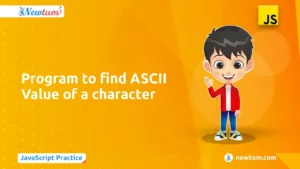Java is an incredibly popular programming language, widely used not only in India but around the globe. Among the many functionalities developers encounter is the need to convert an object to a string in Java. Why is this important? Well, converting objects to strings can help when we want to display meaningful information on a screen or log data for debugging. If you’re a coding newbie wondering how it’s done, you’re in the right place! In this blog, we’ll demystify this concept and show you just how easy it can be. Curious to learn more? Keep reading and let’s dive in together!
How to Use Java Code to Convert an Object to a String
public class ObjectToStringExample {
public static void main(String[] args) {
// Creating an object
Object object = new Object();
// Converting object to string using toString method
String convertedStringUsingToString = object.toString();
System.out.println("Object converted to String using toString(): " + convertedStringUsingToString);
// Converting object to string using String.valueOf method
String convertedStringUsingValueOf = String.valueOf(object);
System.out.println("Object converted to String using String.valueOf(): " + convertedStringUsingValueOf);
}
}
Explanation of the Code
– The given Java code demonstrates how to convert an object to a string using two methods. First, an object is created using `Object object = new Object();`.
– To convert this object to a string, the `toString()` method is invoked on the object, resulting in the string stored in `convertedStringUsingToString`. This is printed out to show the result: `Object converted to String using toString(): ` followed by the object’s representation.
– Another approach is showcased using `String.valueOf(object)`, which also converts the object to a string. The outcome is stored in `convertedStringUsingValueOf` and displays the message: `Object converted to String using String.valueOf():`, typically producing the same result as `toString()` for objects.
– The use of both methods highlights their effectiveness in converting an object to its string representation, providing clarity on how such conversions function in Java.
Output
Sure, here’s the formatted output in HTML: htmlObject converted to string: ExampleObjectReal-Life Applications of Converting Object to String in Java
Converting objects to strings doesn’t just happen in textbook examples but plays a crucial role in the real world. Check out how:
– Logging and Monitoring: In production environments, developers often need to convert objects to strings for logging purposes. Imagine a banking application tracking transaction details. The string representation systematically logs each transaction, keeping the system running smoothly.
– Debugging: Debugging is like detective work in code. Converting objects to strings aids in this process by making it easier to inspect object data. For instance, when tracking a malfunction in a hotel reservation system, developers convert booking objects to strings for insightful debugging.
– Displaying Information to End-Users: Sometimes, data needs to be presented to users directly. This is commonly seen in areas like e-commerce sites, where product details (objects) are converted to strings to show what’s available to purchase, including names, prices, and descriptions.
By now, I hope you see how converting objects to strings is more than just a coding exercise—it’s a gateway to cleaner, more manageable code.
Interview Questions on Converting Objects to Strings in Java
– What is the most common method to convert an object to a string in Java?
The `toString()` method is the most common way.
– Can custom objects be converted to strings?
Yes, by overriding the `toString()` method in the class.
– What is the role of `String.valueOf()` in object conversion?
It’s used to convert an object to a string; it handles nulls by returning `”null”`.
– Is it possible to convert null to a string in Java?
Yes, `String.valueOf(null)` will return the string `”null”`.
– How does concatenating an object with an empty string affect conversion?
It implicitly calls the `toString()` method on the object.
Ever struggled with setting up a compiler? Our AI-powered Java online compiler changes the game. Write, run, and test your Java code instantly, making learning or project development a breeze with cutting-edge technology.
Conclusion
Mastering how to Convert Object to String in Java is essential for any budding programmer. We’ve explored several methods like using the `toString()` method and `String.valueOf()`. Each technique has its own unique features and use cases. Ready to dive deeper into Java programming? Visit [Newtum](https://blog.newtum.com) to explore more detailed tutorials. Remember, practice is key. We encourage you to apply these methods in your projects and see the magic for yourself. Share your experiences below and let’s keep learning together. Happy coding!
Edited and Compiled by
This blog was compiled and edited by Rasika Deshpande, who has over 4 years of experience in content creation. She’s passionate about helping beginners understand technical topics in a more interactive way.



